Our planet today faces a reality of imbalances. From deforestation to water pollution the list is lengthy. With the famine in Yemen affecting millions of people and the production of single use plastic packaging in the spotlight, the photojournalist series Hungry Planet: What the World Eats plays a role more than ever as a point of self reflection. Photographer Peter Menzel set out during the early 2000s to capture what families around the world eat in a week in a far-reaching global narrative about food and consumption. His family portraits have a larger voice and explain beyond just food on the dinner table.
There is a clear juxtaposition between rural families who live in remote villages and families located in cities near grocery stores. The village-centered families seem to eat a wider variety of unpackaged foods, presumably locally sourced or even right from the garden.
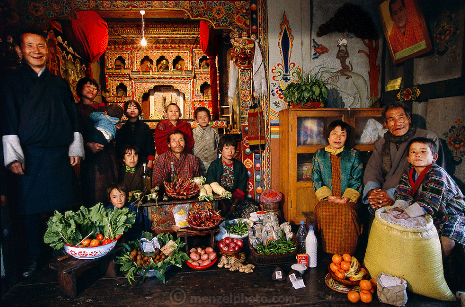
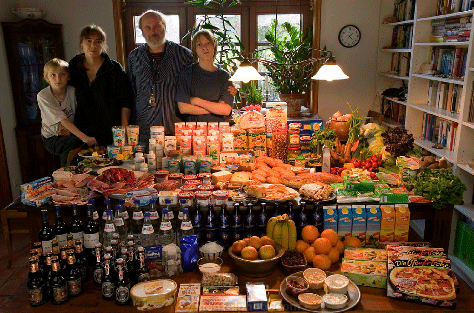
In contrast, families living in high population density towns and cities had a pattern of consuming more processed foods that come in packages. Oftentimes their diets reflect a pattern of convenience like instant ramen noodles or frozen pizza. There are a variety of fruits and vegetables but considerably less than those from villages.
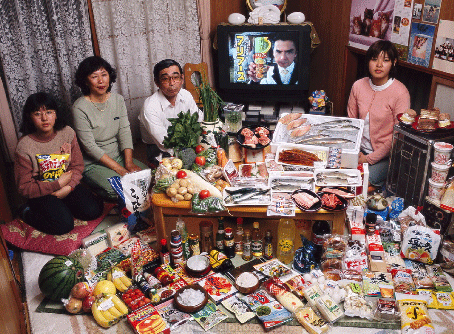
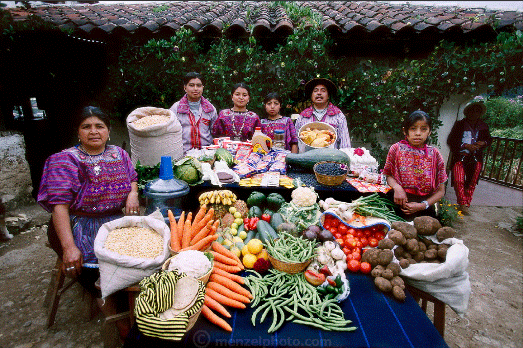
Looking through Menzel’s photographs there is also a pattern of drinks. Drinks are essentially a luxury, and everyone can survive off of clean water. The variety and sheer number of juices, sodas, milks and everything in between as astounding. Some families had over ten cartons of juice while others had eight two litre bottles of cola. In the face of pressing ecological concerns, the amount of plastic that accompanies these beverages is astounding. In addition to the packaging disparity between processed foods and natural products, there are rising health concerns over the availability of healthy foods within restrictive food deserts.
Families from tropical climates filled their tables with fresh fruits and vegetables, a regional and cultural departure from many American family tables. It’s clear that climate accessibility plays a big role in diet and budget, inviting further consideration of the intersectional nature of equality.
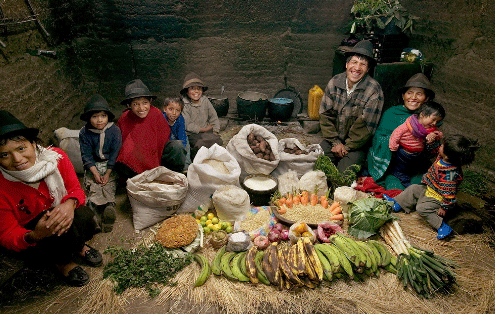
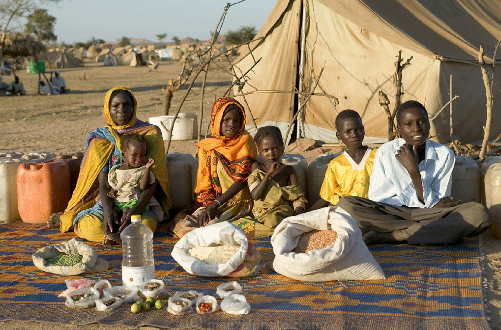
The starkest difference that emerged was the diet disparity between developing countries and their affluent counterparts. The Aboubakar family from Sudan had little food and an extremely unbalanced diet with no protein, fruits, or vegetables. Volume difference played a striking visual role in articulated inequality, and close inspection revealed the nutritional disparity that defined the diets of these global families.
Menzel’s photojournalis, series is compelling and confrontational, more patterns and messages come forth the more you dissect through the portraits. Hungry Planet: What the World Eats forces us to analyze our own consumption and how it intersects with issues of the environment, equality, and production. From eliminating unnecessary waste to sourcing local ingredients, there are a myriad of ways to move towards UN Sustainable Development Goal 2: Zero Hunger and global food security. Menzel’s lens makes us question what we can do to rebalance our earth and help those who are hungry.
To see more photos from the series, explore Menzel’s full portfolio.
